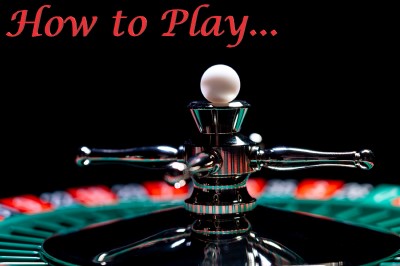 Roulette is a game that has been around since the 18th century, and in all of the time since it has not changed a great deal. In fact, its simplicity is one of the keys to its popularity.
Roulette is a game that has been around since the 18th century, and in all of the time since it has not changed a great deal. In fact, its simplicity is one of the keys to its popularity.
At its most basic, it is a game played with a spinning wheel and a ball. The wheel has various numbered ‘pockets’ coloured red or black, and after the wheel is spun the ball is released onto it where it will eventually come to land in one of these pockets.
Players can bet on which number or colour pocket they think the ball might land on, although there are a few different ways to do this which we will cover later. That’s the game of roulette in a nutshell, so now lets start looking at it in a little more detail.
The Basics
Before we tackle any of the side bets or game variations, let us take you through a bog standard game of roulette and look at how the game is played, and the various different bets you can make.
Whether you play in a real life casino or, as is more likely, at an online casino, your roulette table will look something like this:
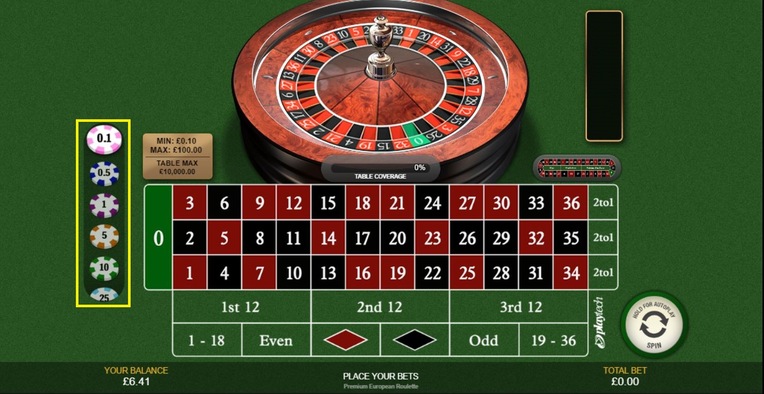
You can see the wheel with various numbered pockets and the board containing all of the same numbers. The wheel is where the game is played out, the board is where the bets are placed.
In real life you would have your chips which you could place on the betting board, but in the online game you have to select your chip value from the list on the left (highlighted in yellow) and then click where you want to place that chip. You can click as many times as you want to make the bet bigger, or go back and change the chip value.
Once you are happy with the bets you have made, you can click the spin button (highlighted in yellow below) and the wheel will spin and the ball will be released.
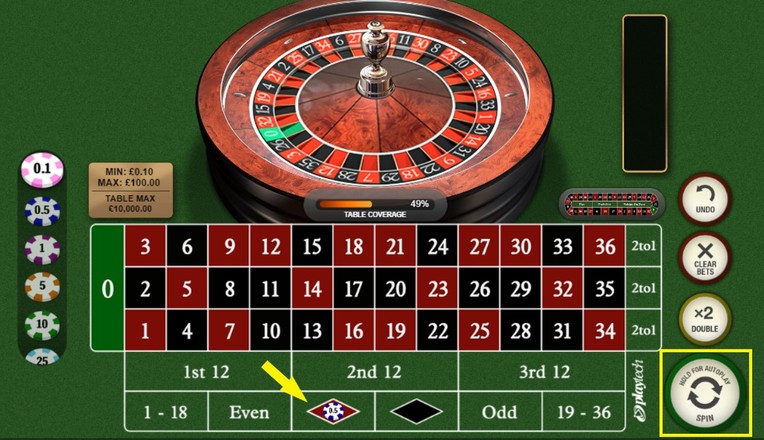
You can see in the image above that we have decided to bet £0.10p on red, so we need the ball to land on any red number in order to win our bet.
We could have placed many more bets if we had wanted, and each one is treated individually, so it is possible to place several different bet types and win them all.
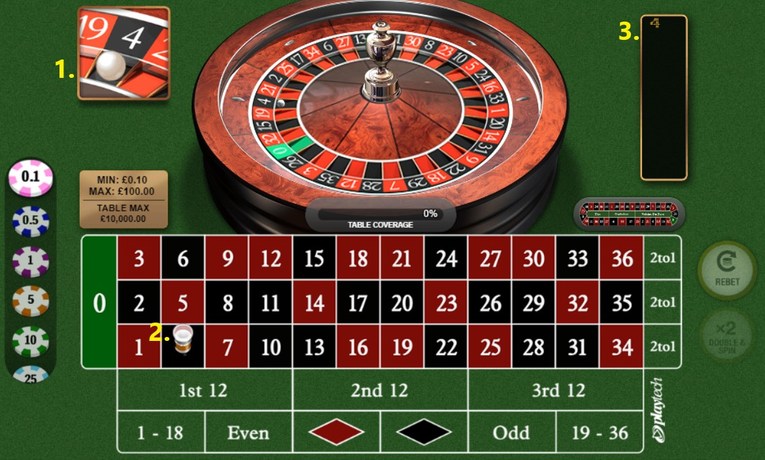
The ball landed on number 4, which is black, so we lost our bet and our 50p goes to the casino. That’s the way the cookie crumbles.
But if you look at the image above you can see 3 main changes to the interface, numbered one to three in yellow: number 1. Shows a close up of the winning pocket on the wheel; number 2. shows a marker placed on the winning number on the board, and number 3. shows the result listed on the results table where you can keep track of all previous winning numbers.
And that is a game of roulette completed. We lost our bet but we might get luckier in the next game.
Roulette Bets
Now you have a basic grasp of how the game works, we can look at the various different bets that you can make.
These can be broken down into two different categories; inside bets, and outside bets. There is no limit on how many of these bets you place on each game, you can even bet on contradicting outcomes if you like, but there is usually a table limit which you cannot go over. It tends to be very high though.
Outside bets have much better odds of coming in but pay out smaller amounts. Inside bets might not be as likely to win, but if they do you will get a much larger amount back on your stake.
Outside Bets
If you look at the image below, you will see that we have placed a 10p chip on each type of outside bet available.
We will explain each bet from left to right.
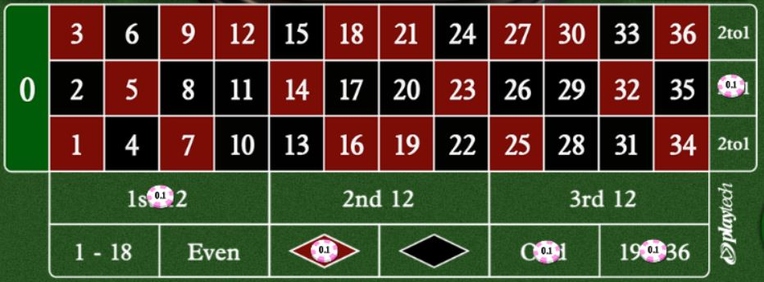
First we have the 1st, 2nd or 3rd 12 bets; these are also called 1st Dozen at some tables. Our bet is on the 1st 12. If you note the size of the box that the words “1st 12” is written in, you can see that this is exactly one 3rd of the board, and all of the numbers above it are included in this bet. Therefore, if the ball landed on numbers 1 to 12 (excluding zero) our bet would win. This pays out at 2:1, so if we won with a 10p stake we would get 20p back on our stake.
Moving on, our next bet is on the red diamond. This is a black or red bet, and it has a little under a 50% chance of coming in. It isn’t a true 50/50 chance because of the green zero which we will cover later. For this bet to win we would need the ball to land in any red pocket on the wheel, and we would be paid out at 1:1, so we would win 10p on our 10p stake.
Up next is odd or evens bets, and they work in the exact same way as red or black bets except the winning conditions are based on whether the number is odd or even. We have bet on Odd, so as long as the ball lands on an odd number we will be paid out at 1:1.
Our next bet is on the 2nd 18. The board has 36 numbers in total (plus the zero) and numbers 1-18 are the 1st 18 while numbers 19-36 are the 2nd 18. The ball must land on any number from 19-36 here for us to win our bet, and once again, the payout for this is 1:1, so we would get 10p back on our stake.
Finally we have the rows. These bets split the board longways into three, or to think of it another way into a top row, a middle row, and a bottom row. Our bet is on the middle row, so the numbers 2, 5 , 8, 11, 14, 17, 20, 23, 26, 29, 31, 33, and 35 would all be winners for us and pay out at a 2:1 ratio, giving us 20p back on our 10p bet.
For quick reference:
| Bet Type | Payout |
|---|---|
| 12s/Dozens | 2:1 |
| Red/Black | 1:1 |
| Odds/Evens | 1:1 |
| 1st & 2nd 18 | 2:1 |
| Rows | 2:1 |
Inside Bets
We will work from left to right again when looking at the inside bets, starting with a lesser used bet.

The zero is the only number not included in any of the outside bets. To win money when the ball lands on the zero you have to either bet on the zero specifically, or include it in a split. Here we have included the zero in a 3 way split with the numbers 3 and 2, so if the ball landed on these numbers we would be paid out at 11:1. This is essentially the same a street which we will cover shortly.
Our next bet is a standard split between the 8 and 11, which would pay out at 17:1 if the ball landed on one of those two numbers. You can do this with the zero too, you don’t have to make a 3 way bet like we did.
Next up is the street bet which comprises of 3 numbers stacked vertically on the board. Our bet is placed on the numbers 16, 17, and 18, and will pay out at 11:1 if one of those numbers wins.
Similar to the street is the line bet. This is a bit like betting on two streets right next to each other, so it includes six numbers and pays out at 5:1. Numbers 22-27 are the ones we would be cheering for here.
A corner bet is the next on the list, which covers four different number and pays out at 8:1, so a 10p bet would see an 80p return on top of the stake.
Last but not least is one of the more famous bet types, the straight up. This is a bet on a single number and carries the highest payout potential on the board at 35:1. You can make this bet on any number you like including the zero, but the ball must land on that specific number for your bet to win.
For quick reference:
| Bet Type | Payout |
|---|---|
| 3 Way Split | 11:1 |
| Split | 17:1 |
| Street | 11:1 |
| Line | 5:1 |
| Corner | 8:1 |
| Straight Up | 35:1 |
The Zero
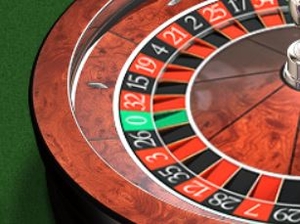 The reason the zero is included on the roulette board is to give the casino an edge. All casino games have a house edge which is why the phrase ‘the casino always wins in the end’ rings true; because all games are weighted in their favour.
The reason the zero is included on the roulette board is to give the casino an edge. All casino games have a house edge which is why the phrase ‘the casino always wins in the end’ rings true; because all games are weighted in their favour.
If the ball lands on zero then all outside bets will lose. Most inside bets will lose too, aside from a street or split containing the zero or a straight up bet on it.
The chances of the ball landing on zero are 1 in 37 or about 2.7%, which goes a long way to giving the casino their 2.63% house edge on standard European roulette.
Variations
The example we used in our walkthrough above was from a game of classic European roulette, which is the game variation you will see most often if you are a UK based player. However, you may also come across French Roulette and American Roulette.
Things get a little complicated if you dig too deeply into this, but technically, there are just two different sets of roulette rules; those where all outside bets lose if the ball lands on zero (American roulette), and those where they don’t necessarily (French roulette).
However, there are also different table/wheel layouts built to suit different versions of the game, and over time the different tables and the different rules have become confused.
European roulette is something of a hybrid of the two original types of roulette: it typically uses an American table layout but only has a single zero, like French roulette. However, it is played using American rules (outside bets lose when the ball lands on zero).
So, while European roulette isn’t technically a variation in and of itself, it has become one over the years and is now accepted by all but the purists as its own version of the game.
American Roulette
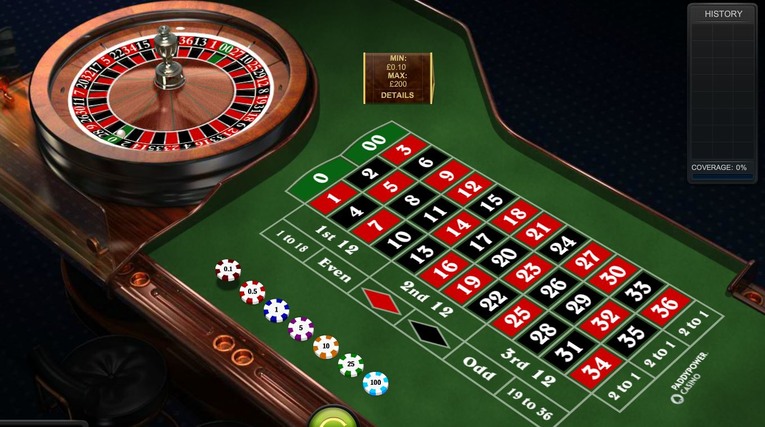
Looking at the game in the image above, you should be able to spot one fairly obvious difference between American roulette and European roulette.
If you can’t then let us help you; there is a double zero as well as a single zero.
As we know, the zero is what gives the casino their edge, so by adding another zero the casino is seriously bulking out its earning potential, boosting their house edge to 5.26%. The long and the short of it is that playing American roulette would be a mistake if there is a European version available.
One other minor difference is that the numbers are not in the same order on the wheel in American roulette as they are on European roulette, but this doesn’t make a difference to anything other than the way things look.
In a real casino, the table would be run by a single croupier.
French Roulette
A lot of people think that French Roulette and European Roulette are the same thing, but this isn’t really the case anymore. If you ever hear someone talking about European Roulette and mentioning the en prison or la partage rule, then they are mistakenly talking about French Roulette.
French roulette may look the same as European roulette in many online versions, but traditionally the table would be red and the writing in French – oddly enough. The layout may also be different as you can see here:
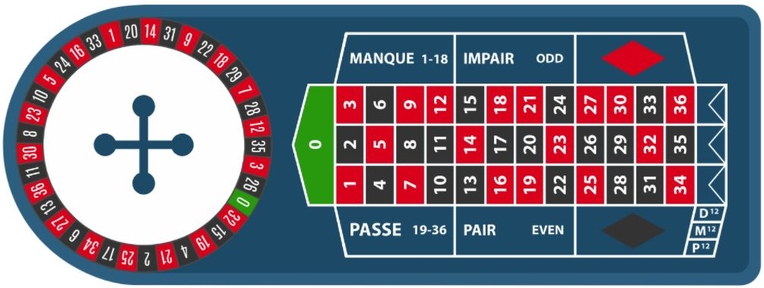
The main attraction for most players though, is the en prison or la partage rules, and these both come into effect if the ball lands on zero and you have placed outside bets. With en prison, these otherwise losing bets will be marked (or put ‘in prison’) and left on the table for the next spin. If the bets win on this second spin they are returned albeit without a payout.
With la partage, losing outside bets will return 50% of the stake if the ball lands on zero, so your losses are minimised.
This brings the house edge down to just over 1%, so they are understandably popular rules.
In a real casino French roulette is traditionally played with two croupiers, one on either side, as well as a table umpire!
Alternatives and Side Bets
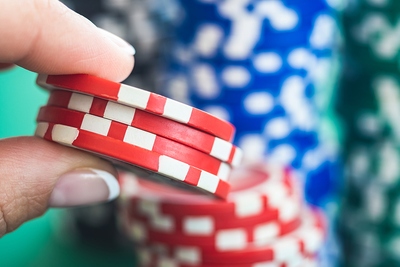 As time has gone on, and thanks to the era of online casino, roulette variations and side bets have been coming thick and fast, presenting players with endless new ways to play the traditional game.
As time has gone on, and thanks to the era of online casino, roulette variations and side bets have been coming thick and fast, presenting players with endless new ways to play the traditional game.
All of these side bets or game variations are based on either European, American, or French roulette as a starting point, but they then have extras built in.
A lot of the time the payouts have been adjusted to more equally weight the game so that it doesn’t sit too far in the player’s favour, but many of these extra features also have the potential to pay out much larger amounts than normal.
- Extra Pocket – There are many different versions of this side bet, World Cup Roulette or Key Bet Roulette are two that we have covered on this site, and they all work by adding an extra pocket to the wheel. You need a bet on this extra pocket otherwise if the ball lands on it you get nothing, but assuming you have made a bet you can win a lot more than the 35x you would get from a straight up bet.
- Free Bets – Some games offer players something for nothing, such as Betfair Bonus Roulette, and Dragon Jackpot Roulette, where your winnings can be boosted if the ball lands on the correct pocket regardless of whether or not you have made a bet on it.
- Multipliers – This is more common with live version of the game like Lighting Roulette and Quantum Roulette, where a few numbers are chosen before each spin to be boosted. This means that straight up bets on these numbers will pay out at much higher odds.
As well as these you can also find games that have been mainly changed visually like Pinball Roulette (this one also has a ‘Gamble’ feature but the base game rules are unchanged) which are something a bit different but don’t offer much else, and others that have used roulette as a starting point but then changed almost everything else about the game such as Roulette Diamond.
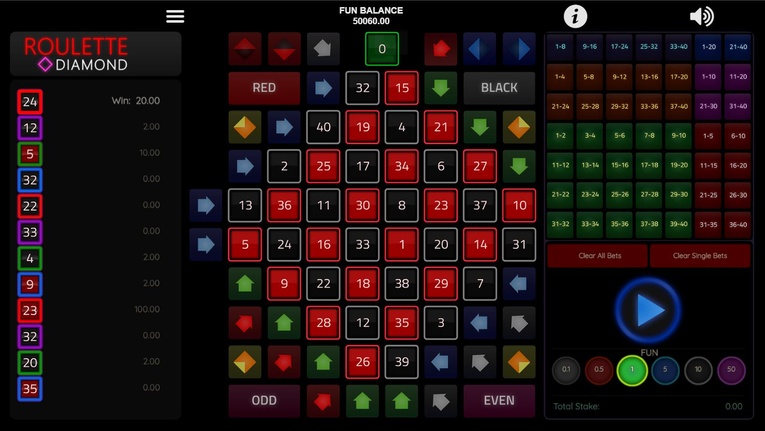
On top of this there are even versions of the game based on TV shows and board games like Deal or No Deal and Monopoly, where the developers have tried to build aspects of the theme into the game.
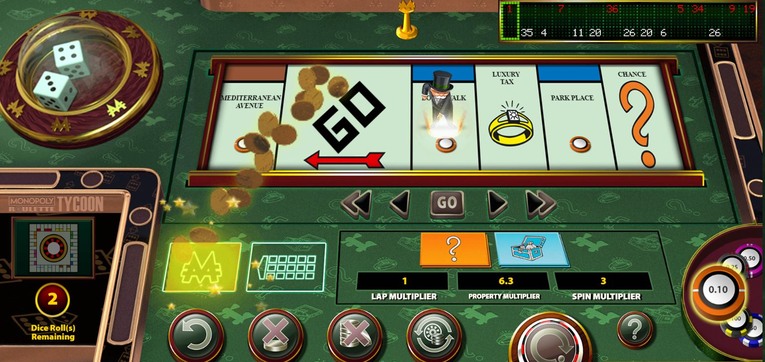
There are no limits as to how game developers can adapt the old favourite, and as you can see some of the things they have done take the game far from its original form.
This is bound to continue, which is great because players who may not be too keen on the more traditional version of the game might find something to enjoy in these side bets or alternative versions, while those who are put off by what some might call novelty additions can just stick to the real thing.
Common Questions
